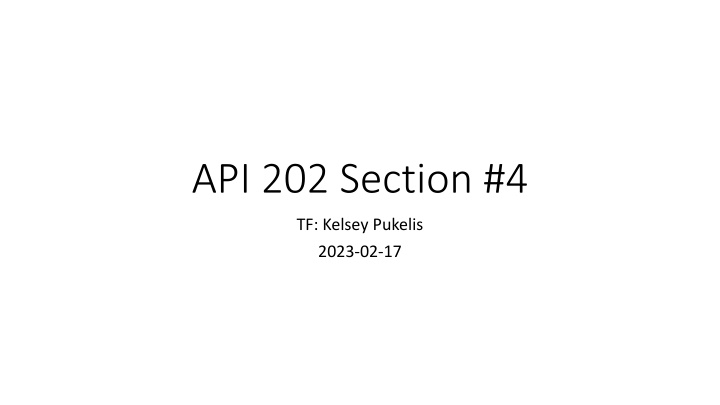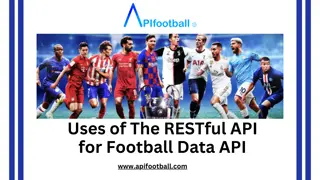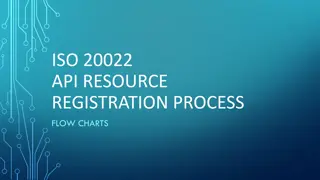
When to Use Causal Language in Data Analysis
Explore the importance of using causal language in data analysis, including experiment scenarios and examples. Learn to differentiate between causal and non-causal language and understand the nuances behind determining causal relationships.
Download Presentation

Please find below an Image/Link to download the presentation.
The content on the website is provided AS IS for your information and personal use only. It may not be sold, licensed, or shared on other websites without obtaining consent from the author. If you encounter any issues during the download, it is possible that the publisher has removed the file from their server.
You are allowed to download the files provided on this website for personal or commercial use, subject to the condition that they are used lawfully. All files are the property of their respective owners.
The content on the website is provided AS IS for your information and personal use only. It may not be sold, licensed, or shared on other websites without obtaining consent from the author.
E N D
Presentation Transcript
API 202 Section #4 TF: Kelsey Pukelis 2023-02-17
Outline 1. When to use causal language 2. Experiment scenarios 3. Non-linear regression
Examples of causal language vs. not Causal language Causes Causal relationship X decreases/increases Y Any action verb Effect of X on Y Influences (somewhere in between, I would recommend avoiding for this class) Not causal language Is associated with Relationship between Correlated with
Notes about causal language Determining whether something is causal or not is more about our assumptions about the setting and speculations about the relationships between variables in the population rather than output from regressions using sample data Why is this incorrect? "Yes, here the p value is 0.0218 which is less than 0.05 making it statistically significant at 5% level. Hence, we can conclude there is a causal relationship."
Tip: avoid causal language UNLESS We are describing a relationship of a policy question we are interested in answering, which is often causal i.e. if we changed our policy on X, would it affect an outcome Y? Even though we may not be able to answer the question using data
Tip: avoid causal language UNLESS we have evidence from: We have evidence from a regression where we think we have controlled for all possible important omitted variables We may or may not be convinced of this, depending on the setting + data available an experiment a natural experiment that we are convinced by If you stick with Professor Michela Carlana s next module, you will cover this
Experiments Some materials drawn from JPAL: https://www.povertyactionlab.org/research- resources
Experiments review Randomly assign units (people) to treatment group and control group Random assignment (if it works) eliminates any source of omitted variable bias Observed or unobserved We can estimate the effect of being assigned to the treatment on outcomes: ??= ?0+ ?1????????.??.??????????+ ??
Experiment topics 1. Non-compliance 2. Spillovers 3. Attrition
What is compliance? Actual Participation (possibly non-random) Actually participates in control group (e.g. participates in a regular class) Actually participates in treatment group (e.g. participates in a regular class) Random Assignment Assigned to control group (e.g. assigned to regular class) Assigned to treatment group (e.g. assigned to small class) Compliance ( non-participants ) Non-compliance ( crossovers ) Non-compliance ( no-shows ) Compliance ( participants ) Note: The structure from this table is different from the lecture notes table!
Why might non-compliance occur? Non-compliance could arise if factors other than random assignment influence program allocation Can be due to project implementers or to participants themselves Why does this matter? Non-compliance messes with randomness , which is the whole reason we ran the experiment in the first place!! If we don t analyze the data properly, we are back to the same issues as before!!! (e.g. omitted variable bias)
How could OVB reappear? Say we ran the Tennessee STAR experiment, randomly assigning class size and studying effects on students test scores. Suppose some students assigned to regular classes switch into small classes because their involved parents make calls to the school principal to get them switched. Say we go on to analyze the experiment comparing students who are actually in small classes to those actually in regular classes. How does this reintroduce omitted variable bias?
How could OVB reappear? How does this reintroduce omitted variable bias? If we analyze the experiment comparing students who are actually in small classes to those actually in regular classes, then we are reintroducing an omitted variable (parental involvement or parental income) back into our analysis, which is likely to bias our results. (See section recording for a walk-through of signing the bias in this case.)
Assuming randomization worked we can [never / sometimes / always] learn the causal effect of being assigned to treatment. we can [never / sometimes / always] learn the causal effect of the treatment itself.
Assuming randomization worked we can [never / sometimes / always] learn the causal effect of being assigned to treatment. Always. Assuming randomization worked, we randomly assigned units (people) to treatment or control groups, so we can always study random assignment, even if people did not perfectly comply. This is called the Intent to Treat (ITT) effect.
Assuming randomization worked we can [never / sometimes / always] learn the causal effect of the treatment itself. Sometimes. If there is perfect compliance, we can analyze the effect of the actual treatment. In this case, this is the same as analyzing the effect of being assigned to treatment. Under certain assumptions, even if there is imperfect compliance, we can analyze the effect of the actual treatment (outside the scope of this course)
Which is the policy-relevant parameter? The causal effect of being assigned to treatment OR the causal effect of the treatment itself? Consider the context of randomizing a deworming treatment program across schools.
Which is the policy-relevant parameter? The causal effect of being assigned to treatment OR the causal effect of the treatment itself? Consider the context of randomizing a deworming treatment program across schools. It depends! The causal effect of the treatment itself = the medical effect of a deworming treatment However, we may not be interested in the medical effect of deworming treatment, but instead what would happen under an actual deworming program. If students often miss school and therefore don't get the deworming medicine, the intention to treat estimate may actually be most relevant.
Check for understanding In the last slide, if we ignored spillovers, we would [overestimate / underestimate] the true effect of the hygiene program on health.
Check for understanding In the last slide, if we ignored spillovers, we would [overestimate / underestimate] the true effect of the hygiene program on health. Underestimate. The true effect of the hygiene program is the difference between the treated group (which has good health) and an untainted control group (which has bad health). With spillovers, however, the control group is actually somewhat treated (so has medium health). So, if we ignored spillovers, we would measure the impact of the treatment as the difference between good health and medium health, which is an underestimate of the true difference.
Check for understanding In the last slide, if we ignored spillovers, we would [overestimate / underestimate] the true effect of the job training program on employment.
Check for understanding In the last slide, if we ignored spillovers, we would [overestimate / underestimate] the true effect of the job training program on employment. Overestimate. The job training program increases the job prospects of some treated individuals at the expense of individuals in the control group. The intervention displaces the jobs from some control individuals to some treated individuals. If we only saw data from the world with the intervention, we would conclude the training program s effect on employment was higher than the true effect (overestimate).
Extra slide if youre curious, but is outside the scope of this class.
Extra slide if youre curious, but is outside the scope of this class.
Can you think of an example of a spillover? In the context of a school tutoring program? In the context of the Oregon Health Insurance Experiment? In the context of an agricultural fertilizer program?
Can you think of an example of a spillover? In the context of a school tutoring program? This is an example of a likely informational/behavioral spillover. If you tutor some children in a school, and the students help each other learn in or outside the classroom, then there could be positive spillovers. In particular, spillovers from tutored children onto children not enrolled in the tutoring program. In the context of the Oregon Health Insurance Experiment? This is an example of a possible general equilibrium or displacement spillover. Recall that providing insurance was found to increase utilization of the emergency room. If emergency rooms were constrained, and newly insured patients took the place of existing patients, then we might overestimate the effects of the health insurance offer on health outcomes. (Admittedly this is a bit of a stretch.) In the context of an agricultural fertilizer program? This is an example of a literal physical spillover, if fertilizer from one farmer s land blows onto another farmer s land.
Typical settings where attrition is an issue Multiple rounds of surveys Where people drop out of a program/school, and there is no administrative data on them afterwards Geographic mobility or death
Attrition example Suppose we were interested in the effect of a war draft on health outcomes in old age. What might be an attrition issue in this context?
Attrition example Suppose we were interested in the effect of a war draft on health outcomes in old age. What might be an attrition issue in this context? If individuals who are drafted are also more likely to pass away earlier on in life, than we would not be able to observe their health outcomes in old age. If we instead were interested in mortality earlier on in life directly, and we could observe this for all people in our study, then attrition would not be an issue.
Non-linear regression See Google Collab link






















